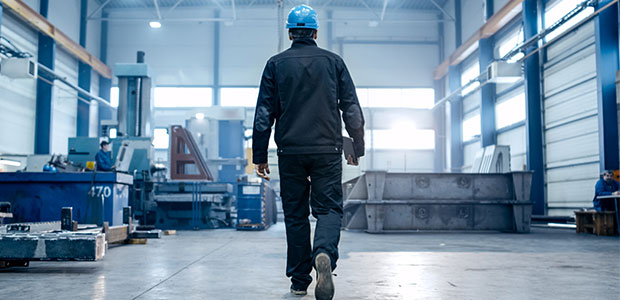
Systems Integration for a Smarter, Safer Facility
Connected and responsive technology can help improve security strategies within facilities, especially during emergencies.
- By Julie Brown
- Mar 09, 2020
“How can I ensure my occupants’ safety?”
It’s a common question that facility managers ask themselves in their day-to-day. With the rapid evolution of building innovations, an integrated strategy might be the solution. Connected and responsive technology can help improve security strategies within facilities, especially during emergencies. The data collected through connected building systems can better equip building managers with the insights they need to better prepare for emergency situations, ultimately helping occupants feel safer. While systems integration sounds complex, the process is simpler than it might seem.
Completing an Integration Project Without the Headache
Beginning any building project can be intimidating, and systems integration is no different. When kicking off an integration project, building owners should work with an integrator who can help identify gaps in current systems, and which existing systems can be easily connected to reduce labor. Facility managers may be surprised to find out that a “rip and replace” strategy is not needed, and that existing systems can be leveraged for improved safety.
From there, create an outcome-driven roadmap. Begin by identifying the stakeholders’ desired outcomes for the project up front, whether that’s reducing false alarms in schools through greater data analysis or improving hospital efficiency through streamlined operations. This keeps the team focused on these goals from start to finish. Once outcomes and technology needs have been identified, a detailed roadmap can be created to keep the project on schedule and within budget. This approach keeps the integration process easy and manageable.
Why Integrate Systems for Building Safety?
Systems integration streamlines building operations and maximizes system and equipment performance, contributing to a more intelligent and safer facility. By allowing previously disparate systems—like lighting, HVAC, fire detection, access controls, communication systems and more—to communicate with each other and exchange information on one efficient network, facility and safety managers can improve their response to emergencies or avoid them in the first place. In addition to saving valuable time and reducing inefficiencies, systems integration allows facility managers to focus on their core mission whether it’s healing patients or teaching students.
A great example of systems integration in action is how intelligently connecting fire detection, lighting, HVAC and communication systems within a school can improve student safety during an emergency.
When smoke sensors detect a fire, this information can be immediately communicated with the other systems to initiate a school-wide response. LED lighting can be activated in the hallways to light the way during evacuation, providing improved visual acuity through the haze of smoke.
Simultaneously, HVAC systems can automatically shut down in areas to prevent fueling the flames with oxygen and contain the fire while voice alarms activate to aid teachers’ evacuation efforts and direct students out of the building. At the same time, mass notification systems can alert local first responders to the situation and even pinpoint where in the building the fire started. This integration between these four systems can result in a faster emergency response and smoother evacuation process during a school-wide emergency.
Yet, this does not only apply to school systems. Through systems integration, any building can be prepared for an emergency. As a result, occupants of a school, a hospital or an office building can trust they are in the safest possible environment.
A Wealth of Data for Safety in the Long-Term
Investing in an integrated building is beneficial for short-term safety and emergency prevention, but it also creates sustainable security in the long run through improved analytics. By connecting multiple building systems, data can be more easily mined and therefore provide a larger volume of data available for analysis and located within one database. The holistic and in-depth insights into a facility’s operations that can be leveraged to make the space safer. Because several systems are providing data, the resulting unified database provides a dynamic view of building operations that allows facility and safety managers to make informed decisions.
By tracking patterns within a building’s performance data, facility and safety managers can pinpoint exactly where safety issues are occurring. Perhaps a hospital exit is consistently being left unlocked overnight by an unknown staff member, leaving the building and patients exposed to security threats. By examining the hospital’s access control data to discover when the door is being left unlocked, and cross-referencing that with the staff schedule, it’s easy to determine exactly who is leaving the building unlocked. Because of the greater wealth of data, facility managers can take a proactive approach to locate and remedy these security issues in a fraction of the time—before they become dangerous to the building. Proper operational analytics are a crucial element of ensuring a building’s security over its entire lifecycle.
Smarter and Safer Building Environments
For the safety-conscious facility owner or manager, integrating building systems is an intelligent approach that lasts the lifecycle of the building. The building’s occupants and equipment are kept safe—whether through an integrated fire detection approach or access control data that empowers long-term, proactive security. With the right outcome-driven approach, it’s easy to achieve this streamlined building environment.
Consider intelligent integrations for a smarter and safer facility. Your occupants’ lives could be at stake.